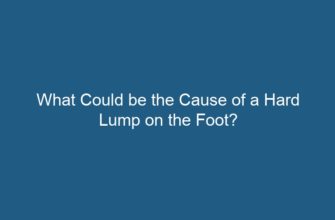Trigger finger, also known as stenosing tenosynovitis, is a condition that causes one or more fingers to become stuck in a bent position. It occurs when the tendons in the finger become inflamed or irritated, leading to difficulty in straightening or bending the affected finger(s). While surgery is a common treatment option, there are several non-surgical methods that can help alleviate trigger finger symptoms. In this article, we will explore various techniques to fix trigger finger without the need for surgical intervention.
- 1. Resting and Protecting the Affected Finger
- 1.1 Using a Finger Splint
- 2. Applying Heat and Cold Therapy
- 2.1 Heat Therapy
- 2.2 Cold Therapy
- Trigger finger and thumb non-surgical treatments – hydrodissection (NRRIT) & Prolotherapy
- Trigger Finger Can Be Released within 5 Minutes by Dr.Norarit @Vejthani Hospital
- 3. Finger Exercises and Stretches
- 3.1 Finger Flexion and Extension
- 3.2 Finger Stretching
- 4. Non-Steroidal Anti-Inflammatory Drugs (NSAIDs)
- 5. Hand Therapy
- 6. Corticosteroid Injections
- 7. Acupuncture
- Frequently Asked Questions (FAQs)
- FAQ 1: How long does it take to fix trigger finger without surgery?
- FAQ 2: Can trigger finger come back after non-surgical treatment?
- FAQ 3: Can trigger finger be cured naturally?
- FAQ 4: Can I continue using my hand during non-surgical treatment for trigger finger?
- FAQ 5: Are there any complications associated with non-surgical treatment methods?
- FAQ 6: When should I consider surgical intervention for trigger finger?
- Conclusion
1. Resting and Protecting the Affected Finger
The first step in treating trigger finger without surgery is to provide ample rest to the affected finger. Avoid repetitive movements or activities that may aggravate the condition. Additionally, you can protect the finger by wearing a splint or a finger brace, which helps to immobilize the joint and reduce further irritation.
1.1 Using a Finger Splint
A finger splint is a device that holds the affected finger in a straight position, preventing it from bending or flexing. It provides support and stability to the finger joint, allowing the inflamed tendon to rest and heal. To use a finger splint:
- Clean the affected finger and dry it thoroughly.
- Place the splint over the affected finger, ensuring it covers the joint.
- Secure the splint with the provided straps or adhesive tape.
- Wear the splint as recommended by your healthcare professional.
2. Applying Heat and Cold Therapy
Heat and cold therapy can help reduce inflammation and alleviate pain associated with trigger finger. Heat therapy helps to relax the muscles and increase blood flow to the affected area, while cold therapy numbs the area and reduces swelling. Here’s how you can use heat and cold therapy:
2.1 Heat Therapy
To apply heat therapy to the affected finger:
- Soak a clean towel in warm water or use a heating pad set to a comfortable temperature.
- Wrap the warm towel around the affected finger and leave it on for 10-15 minutes.
- Repeat the process 2-3 times a day or as recommended by your healthcare professional.
2.2 Cold Therapy
To apply cold therapy to the affected finger:
- Wrap an ice pack or a bag of frozen peas in a thin towel.
- Apply the cold pack to the affected finger for 10-15 minutes.
- Repeat the process several times a day or as recommended by your healthcare professional.
Trigger finger and thumb non-surgical treatments – hydrodissection (NRRIT) & Prolotherapy
Trigger Finger Can Be Released within 5 Minutes by Dr.Norarit @Vejthani Hospital
3. Finger Exercises and Stretches
Finger exercises and stretches can help improve flexibility and reduce stiffness in the affected finger. These exercises aim to strengthen the muscles and tendons, promoting smooth movement and preventing further finger locking. Here are some simple exercises and stretches you can try:
3.1 Finger Flexion and Extension
To perform finger flexion and extension exercises:
- Hold your affected hand in front of you with the palm facing down.
- Slowly bend your affected finger(s) inward, making a fist.
- Hold the position for a few seconds, then slowly straighten your finger(s) back to the starting position.
- Repeat the exercise 10-15 times, 2-3 times a day.
3.2 Finger Stretching
To perform finger stretching exercises:
- Hold your affected hand in front of you with the palm facing up.
- Gently pull the affected finger(s) back, towards your body, using your other hand.
- Hold the stretch for 10-15 seconds, then release.
- Repeat the stretch 2-3 times for each finger, 2-3 times a day.
4. Non-Steroidal Anti-Inflammatory Drugs (NSAIDs)
Non-steroidal anti-inflammatory drugs, commonly known as NSAIDs, can help reduce pain and inflammation associated with trigger finger. These medications can be obtained over-the-counter or prescribed by your healthcare professional. Common NSAIDs include ibuprofen, naproxen, and aspirin. Follow the recommended dosage instructions and consult your doctor before taking any medication.
5. Hand Therapy
Hand therapy, performed by a certified occupational therapist, can be beneficial in treating trigger finger without surgery. A therapist can guide you through exercises and techniques specifically tailored to your condition, helping to improve finger mobility and reduce symptoms. They may also provide additional treatments such as ultrasound therapy or massage to alleviate pain and inflammation.
6. Corticosteroid Injections
If conservative treatments fail to provide relief, corticosteroid injections may be considered. These injections contain a powerful anti-inflammatory medication that is directly injected into the affected tendon sheath. Corticosteroids can help reduce inflammation and alleviate symptoms temporarily. However, it’s important to note that the effects of the injection may wear off over time, and repeated injections may be necessary.
7. Acupuncture
Acupuncture, an ancient Chinese therapy, involves the insertion of thin needles into specific points on the body to promote healing and pain relief. Some studies suggest that acupuncture may be effective in treating trigger finger by improving blood flow, reducing inflammation, and promoting the release of endorphins. Consult a licensed acupuncturist to discuss the potential benefits and risks associated with acupuncture for trigger finger.
Frequently Asked Questions (FAQs)
FAQ 1: How long does it take to fix trigger finger without surgery?
There is no definitive timeline for fixing trigger finger without surgery as it depends on various factors, including the severity of the condition and adherence to treatment methods. With proper rest, splinting, and other non-surgical interventions, it is possible to experience improvement within a few weeks. However, full recovery may take several months.
FAQ 2: Can trigger finger come back after non-surgical treatment?
While non-surgical treatments can provide relief from trigger finger, there is a possibility of recurrence. It is essential to continue practicing preventive measures and exercises even after the symptoms improve to reduce the chances of trigger finger returning.
FAQ 3: Can trigger finger be cured naturally?
Trigger finger can be managed and improved through non-surgical methods, but a complete natural cure may not be guaranteed for everyone. It is always advisable to consult with a healthcare professional to determine the best course of treatment for your specific condition.
FAQ 4: Can I continue using my hand during non-surgical treatment for trigger finger?
While it is important to rest and protect the affected finger, you can still continue using your hand for light activities that do not aggravate the condition. Avoid repetitive or forceful movements that put strain on the affected finger(s).
FAQ 5: Are there any complications associated with non-surgical treatment methods?
Non-surgical treatment methods for trigger finger are generally safe and well-tolerated. However, some individuals may experience mild side effects such as skin irritation from splinting or temporary pain or swelling after exercises. If you experience severe or persistent symptoms, consult your healthcare professional.
FAQ 6: When should I consider surgical intervention for trigger finger?
If non-surgical treatments fail to provide relief or if the condition significantly affects your quality of life, your healthcare professional may recommend surgical intervention. Surgery involves releasing the affected tendon sheath to allow smooth movement of the finger. Discuss the potential risks and benefits with your doctor before making a decision.
Conclusion
While trigger finger can be a bothersome condition, surgical intervention is not always necessary. Non-surgical treatment methods, such as resting, splinting, heat and cold therapy, finger exercises, and medications, can help alleviate symptoms and improve finger mobility. Additionally, techniques like hand therapy, corticosteroid injections, and acupuncture can provide further relief. It is important to consult with a healthcare professional to determine the most suitable treatment plan for your trigger finger and follow their guidance for optimal results.










